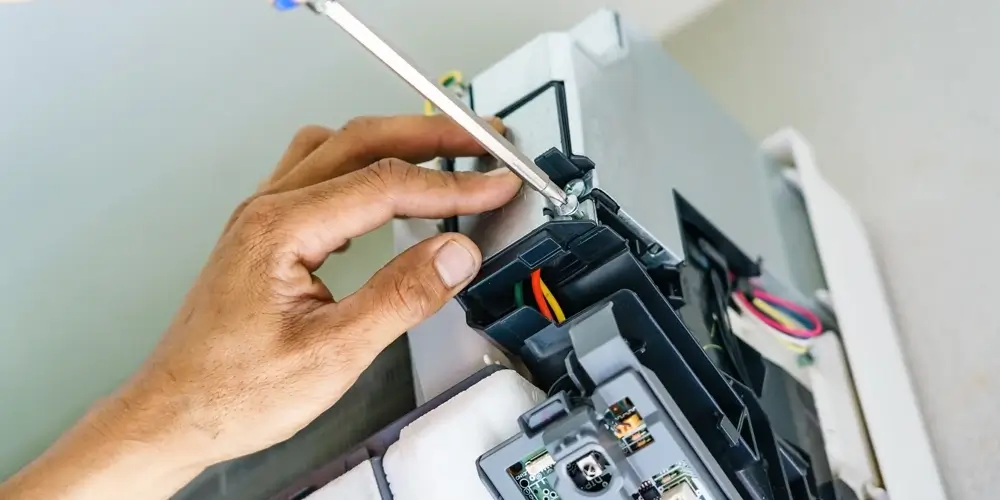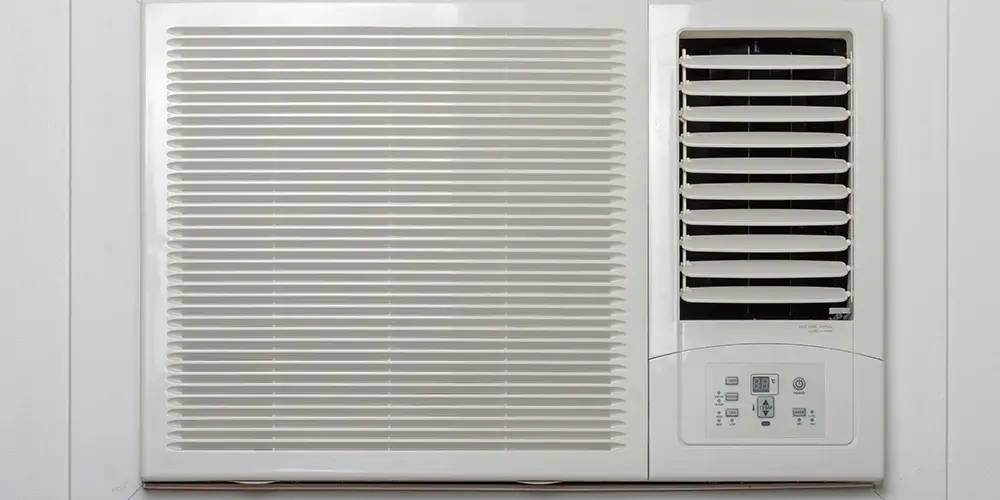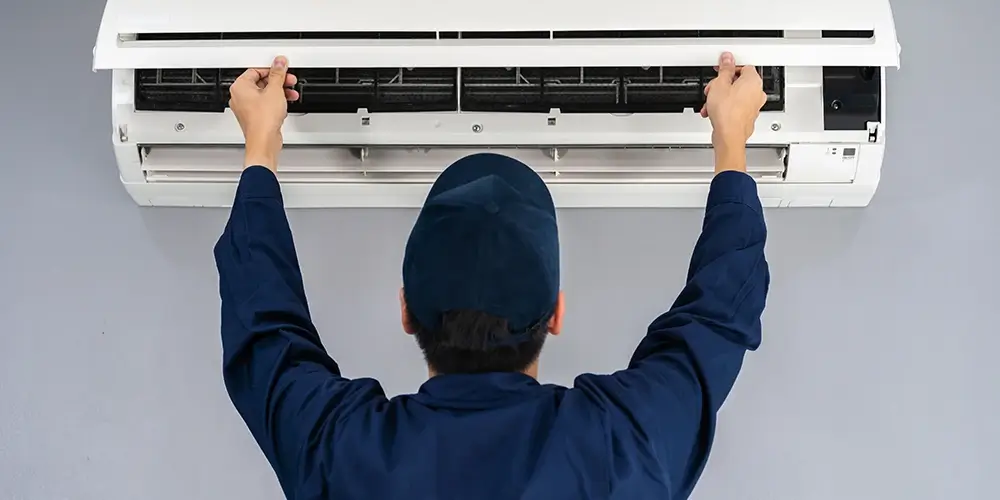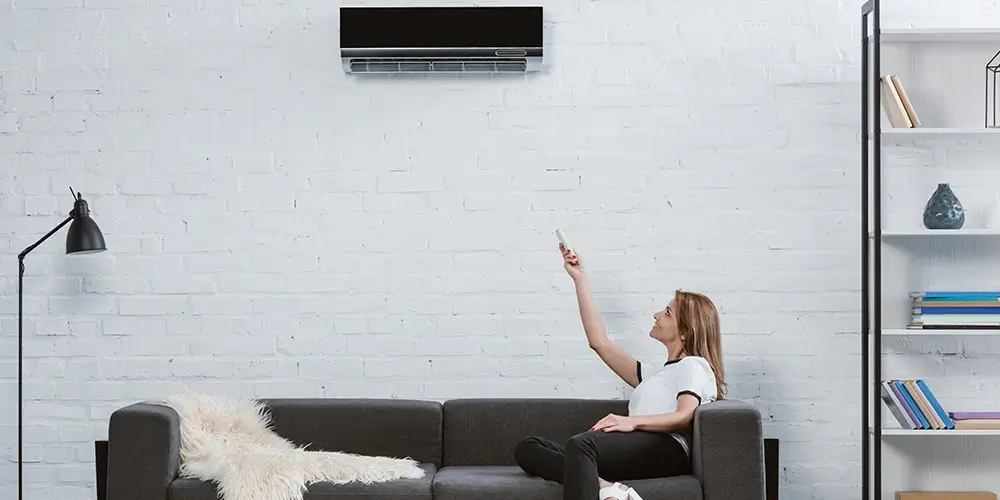Through-the-Wall Air Conditioner Installation & Repair

Wall Air Conditioners: Are They Still a Thing?
The first wall air conditioners went on sale in 1932 for well over $100,000 in today’s money.
We’re happy to announce that we can install a new wall AC unit in your home or business for much less than that. And that it will work far better than the original model that cost nearly as much as a house.
But why would someone want a wall air conditioner today when most buildings and even apartments come equipped with state-of-the-art HVAC systems?
- HVAC systems take up considerable space and usually attach to ductwork, which can be expensive to install. They demand regular maintenance and tune-ups, which add to the costs.
- Wall air conditioners are compact, self-contained, and easy to install. They’re also relatively inexpensive to operate and maintain.
- The best wall air conditioners can cool up to 1,000 square feet! The average apartment in Los Angeles is just over 800 square feet.
- So if you’re looking for an affordable cooling solution that doesn’t need much space or maintenance, a wall air conditioner is a great choice.
West Coast Chief installs and repairs all brands and types of wall AC units. We guarantee our work and can offer same-day service in most cases.
Through-the-Wall vs. Window Air Conditioners
- The main difference between a wall and window air conditioner is that a wall unit is installed through a hole in an exterior wall, while a window unit is installed in a window.
- Window units are easier to install than wall units, but they’re less efficient because of the lack of thermal sealing and insulation around them.
- Window units are also less secure. If your window air conditioner isn’t firmly bolted onto the correct mounts, an intruder can easily pull it out.
- Wall air conditioners are less conspicuous than window units. If you care about the aesthetics of your home or business, you may not like the idea of a large appliance blocking your view and light from a window.
- Finally, wall air conditioners are quieter! They’re better insulated against the noise of blowing fans, and they fit tighter in their mount.
Wall AC Service & Repair
A wall AC unit should be serviced regularly, though not as often as an HVAC system.
Faulty motors, damaged coils, and malfunctioning compressors demand a professional’s touch. And since the motor, compressor, and other parts are fitted into a tight space, they can be challenging to reach without the proper tools.
If your wall air conditioner isn’t cooling, it may need a refrigerant recharge. This is a simple repair, but adjusting refrigerant levels can be tricky.
Too much refrigerant can damage the compressor. Even a skilled handyman may unintentionally do more harm than good, and what began as a tune-up turns into a costly repair.
Drain line clogs are another common problem, backing water up into the unit and shutting it down. And if your wall air conditioner is making strange noises, it may need lubrication.
Finally, if your wall air conditioner runs continuously without cooling and refrigerant levels are okay, you may have to replace it. Our technicians can help you choose a new unit that will work well for your space and budget.
When to Repair or Replace Your Wall Air Conditioner
If your wall air conditioner is more than 10 years old, it’s approaching the end of its lifespan. Replacement is a better option than repair, and you’ll benefit from the much-improved efficiency and cooling power of a new Energy Star-rated unit.
Schedule a service appointment with us, and we’ll help you determine whether repair or replacement is your best option.

How to Choose the Right Wall Air Conditioner
If your unit is too small (underpowered), it won’t cool your space effectively. If it’s too large, it will lower temperatures fast but waste energy as it cycles on and off.
The best way to determine the correct size AC unit is to consult with an expert.
We’ll measure your room, assess your cooling needs, and make recommendations based on our years of experience. We’ll also help you select the right AC features for your lifestyle and budget.
For example, if you have allergies, you might want a unit with a built-in air purifier. Or, if you live in a hot climate, you might invest in a unit with a higher BTU rating (more power).
Wall Air Conditioner Installation
Installing a wall air conditioner is a simple operation for an appliance professional. For a DIYer, it can be a very different story!
- You may have to create a wall mount by cutting a correctly sized hole in the wall. The mount should be able to support the weight of the AC unit, which can be up to 150 pounds. That’s a hefty weight to lift — let’s hope you had oatmeal for breakfast.
- The mount must be level (parallel to the floor), sealed, and clear of electrical wires and plumbing pipes.
- The next step is to install the sleeve, a metal or plastic housing that goes around the AC unit. It protects the unit and provides support.
- You may need to connect refrigerant lines and electrical wiring and ground the air conditioner in some cases.
- As you can see, there’s a lot to installing a wall air conditioner! It’s not a project for a beginner DIYer.

Other Types of Wall-Mounted Air Conditioners
There are other wall-mounted air conditioners on the market, including ductless mini-splits and evaporative coolers (also known as swamp coolers).
Ductless mini-splits have an outdoor unit (compressor/condenser) connected to one or more indoor units (air handlers) via refrigerant lines.
Evaporative coolers work by circulating water over a set of pads. As the water evaporates, it cools the air and blows it into your room. These units are popular in dry climates because they use very little electricity and add moisture to the atmosphere.
Ductless Mini-Split Air Conditioners
Ductless mini-splits have two parts: an outdoor compressor/condenser and an indoor air-handling unit. A conduit, which contains refrigerant tubing, electrical wiring, and a drain line, connects the two units.
Mini-splits are very energy efficient because they don’t require ductwork. The lack of ductwork makes them much easier to install than central air conditioners.
For these reasons, mini-splits are an excellent option for cooling a home or office that doesn’t have existing ductwork. They can also be used to supplement a central AC system.
If you’re interested in learning more about ductless mini-split air conditioners, please call us.

Popular Wall Air Conditioner Brands
- Whirlpool
- Koldfront
- Frigidaire
- Keystone
- LG
- Friedrich
- Amana
Some wall air conditioners have built-in purifiers, remote controls, Energy Star technology, and even smart systems that let you control them from your phone.
Others come with robust warranties that cover all repairs for years to come.
And some are as plain as vanilla ice cream — little more than an on-off switch and basic thermostat.
Please do your research, talk to us, and let us help you decide which unit is best for your budget and needs.
Why Chief for Your AC Service & Installation?
West Coast Chief specializes in appliance repair, heaters, and air conditioners. We don’t do anything else.
We’ve been installing, repairing, and servicing all brands and types of air conditioners in metro Los Angeles and Orange County since 1995.
- We back up every job with some of the best warranties in the business.
- We charge the same low rate regardless of the day or the time of day.
- We don’t assess a travel fee, even for work in remote areas of Los Angeles or Orange County.
- All Chief technicians are licensed, certified, and insured.
- We do residential and commercial work. So if you manage a large apartment complex with 200 wall air conditioners, talk to us. We’ll draw up a maintenance contract that makes sense for you.